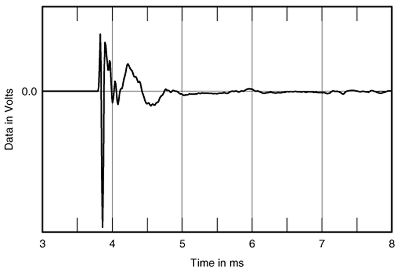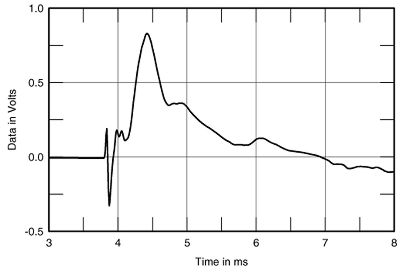| Columns Retired Columns & Blogs |
Joseph Audio RM22si Signature loudspeaker Measurements part 2
Whether or not this on-axis behavior results in coloration will also depend on the speaker's off-axis behavior. Fig.5 shows the changes in the RM22si's response as the measuring microphone moves in 5 degree steps to the speaker's side. You can see that, in the frequency region where the on-axis response is a little peaky, there is actually a lack of off-axis energy. In a typical room, this will compensate to some extent, meaning that the perceived tonal balance may well be neutral. The lateral dispersion is otherwise well controlled, though the tweeter does get quite directional above 10kHz. This might lead to a lack of top-octave "air" in larger rooms (though the RM22's single 6.5" woofer will also be working hard in large rooms).

Fig.5 Joseph RM22si, horizontal response family at 50", normalized to response on tweeter axis, from back to front: differences in response 90 degrees-5 degrees off-axis; reference response; differences in response 5 degrees-90 degrees off-axis.
Vertically, the almost complete absence of drive-unit overlap due to the Infinite Slope crossover results in the speaker being remarkably unfussy over exact listening axis (fig.6)—the opposite of the first-order Dunlavy design reviewed elsewhere in this issue. But the tradeoff is in the time domain, the RM22si's impulse and step responses (figs.7 & 8) being anything but time-coherent, with the outputs from the two drive-units arriving at the microphone at slightly different times, with some ringing also apparent. The subjective effect of this behavior is controversial: proponents of true first-order systems point to the generally good imaging performance offered by such designs; yet those in favor of high-order systems can correctly point to the fact that the ear/brain fuses acoustic events with slightly different arrival times such as those featured by the RM22si.

Fig.6 Joseph RM22si, vertical response family at 50", normalized to response on tweeter axis, from back to front: differences in response 15 degrees-5 degrees above HF axis; reference response; differences in response 5 degrees-10 degrees below HF axis.

Fig.7 Joseph RM22si, impulse response on tweeter axis at 50" (5ms time window, 30kHz bandwidth).

Fig.8 Joseph RM22si, step response on tweeter axis at 50" (5ms time window, 30kHz bandwidth).
Finally, the Joseph's waterfall plot (fig.9) features a very clean decay in the tweeter region—this silk-dome unit is a clean-sounding driver—but the ringing noted in the impulse response can be seen as a smearing of energy at the top of the woofer passband.—John Atkinson

Fig.9 Joseph RM22si, cumulative spectral-decay plot at 50" (0.15ms risetime).
- Log in or register to post comments




































